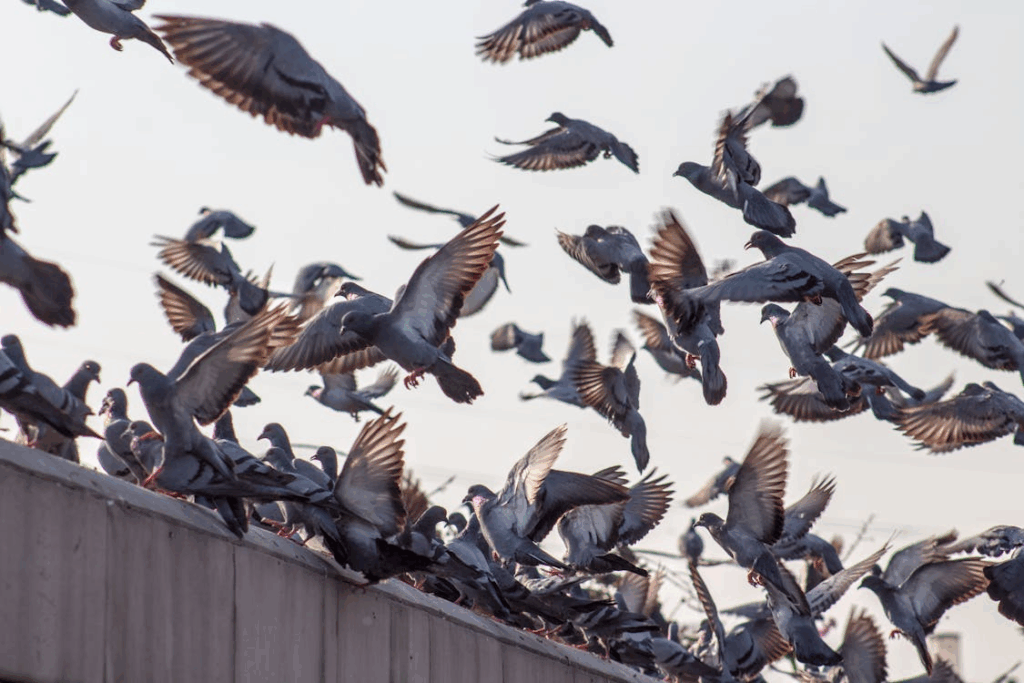Long before meteorologists, people turned to animals that predict the weather. Farmers, sailors, and villagers observed patterns in animal behavior to anticipate storms, droughts, and changing seasons, and surprisingly, many of those instincts remain valid.
Whether it’s cows lying down before rain or birds fleeing an approaching storm, nature’s creatures often sense shifts in the atmosphere better than our most sophisticated gadgets. Here are ten animals that can predict the weather better than you might think.
Frogs: Nature’s Singing Barometers
Frogs are famous for croaking loudly before it rains. They sense changes in humidity and air pressure that signal the onset of precipitation. Some species even start calling earlier in the evening when storms approach, using the moisture-rich air to amplify their mating songs.
Explore Sounds You Can’t Hear — But Still Affect You for more unseen forces shaping daily life.
Cows: Lying Down Before Rain
Farmers have long claimed that cows lie down when rain is coming. There’s truth to it: as humidity rises, cows rest to conserve body heat and protect dry patches of grass beneath them. It’s less superstition and more biological common sense.
Birds: Masters of Air Pressure
Birds are susceptible to barometric pressure. Before a storm, they fly lower to avoid turbulence and thickening air. Some migratory birds even delay flights entirely when pressure drops. Seagulls, swallows, and even chickens have been observed acting restless or staying grounded before heavy rain.
Ants: Builders of Tiny Flood Barriers
When humidity spikes or rain is imminent, ants get busy reinforcing their nests and sealing tunnels. Particular species accumulate extra dirt or leaves over their entrances. It’s a miniature engineering project that forecasts storms better than any app.
For more wild adaptations, visit Animals That Can Survive Without Oxygen for Minutes — or Years.
Sheep: Woolly Weather Warnings
Sheep grow restless and huddle together in anticipation of bad weather. Their thick coats also absorb atmospheric moisture, making them more sensitive to temperature and humidity changes than humans. A silent flock is often a sign that rain is close.
Cats: Sensitive to Static and Storms
Cats’ whiskers and fur are incredibly receptive to static electricity and air pressure. Before thunderstorms, many cats act anxious or hide, sensing electrical buildup in the air. Their unease often precedes lightning by minutes, not hours.
See Animals With Superpowers You Wish You Had for more wild abilities in the animal world.
Crickets: Living Thermometers
Crickets can’t predict storms, but crickets can measure temperature. The speed of their chirping increases with rising temperatures and slows with cooler air. Count the chirps for 15 seconds, add 40, and you’ll get the approximate Fahrenheit temperature. It’s an old farmer’s trick that actually works.
Sharks: Oceanic Storm Sensors
Sharks can detect minute changes in water pressure through specialized sensory organs called ampullae of Lorenzini. Before hurricanes, they swim to deeper waters to escape rough seas. Their mass migrations before major storms have even been tracked by scientists using satellite tags.
Bees: Nature’s Flight Cancellations
Bees stay close to their hives when storms approach. A sudden drop in barometric pressure makes flying difficult, and wet wings can be deadly. Observing quiet hives or bees returning early from foraging has long been a reliable sign that rain is coming.
Groundhogs: Seasonal Forecasters
Though Groundhog Day has become folklore fun, groundhogs really do respond to seasonal cues. Their hibernation and emergence cycles align with soil temperature and sunlight duration, as well as all natural indicators of when winter is ending and spring is near.
If folklore fascinates you, see Real Creatures That Inspired Mythical Monsters.
Why Nature Still Knows Best
Even with satellites and supercomputers, animals remain remarkable weather predictors because they respond instinctively to environmental cues: humidity, pressure, temperature, and sound frequencies humans can’t perceive.
The abilities of nature’s living creatures remind us that technology may measure, but instinct still observes. Sometimes the best forecast doesn’t come from your phone. It comes from a frog, a cow, or a restless cat.




